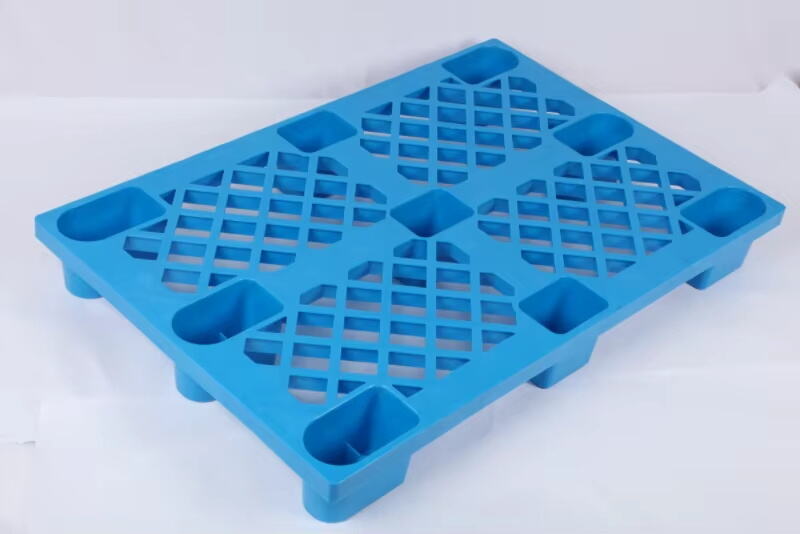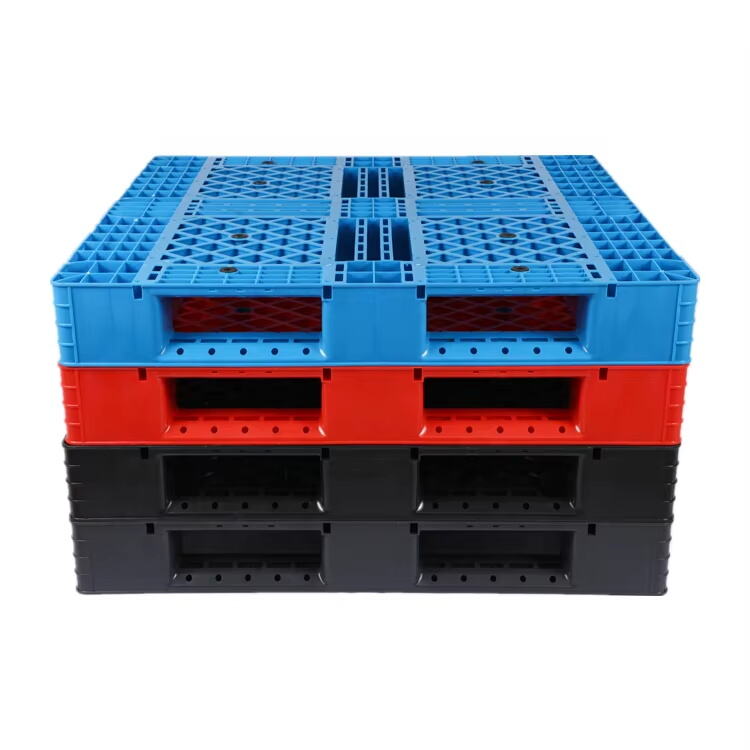Udhëzimet Esenciale për Zgjatimin e Jetës së Palletave Plastike
Në operacionet moderne të zinxhirëve të furnizimit, paleta Plastike kanë bëhet aktivë të pambronshëm që kërkojnë mirëmbajtje të duhur për të siguruar një jetëgjatësi dhe performancë optimale. Këto platforma të qëndrueshme shërbejnë si kurriz i operacioneve të magazinimit dhe logjistikës, çka e bën mirëmbajtjen e tyre të rëndësishme për efikasitetin e biznesit. Njohja e mënyrës së mirëmbajtjes së paleteve plastike jo vetëm që i zgjaton jetëgjatësinë e tyre, por gjithashtu mbrojt investimin tuaj dhe siguron operacione më të sigurta të manipulimit të materialeve.
Evolucioni i teknologjisë së paleve plastike ka sjellur inovacione në dizajn dhe materiale, por këto përmirësime mund të realizohen plotësisht vetëm përmes praktikave të mira të mirëmbajtjes. Kur mirëmbahen në mënyrë të duhur, palet plastike mund të zgjasin disa vite më shumë se homologët e drurit, duke ofruar një kthim superior të investimit dhe duke ulur kostot e zëvendësimit. Le të eksplorojmë strategji të hollësishme mirëmbajtjeje që do t'ju ndihmojnë të ruani flotën tuaj të paleve plastike dhe të maksimalizoni dobësinë e tyre.
Procedurat Kryesore të Mirëmbajtjes për Palet Plastike
Pastroje dhe Sanitizim Rregullt
Ruajtja e pastërtisë është themelore për jetëgjatësinë e paleve plastike. Sprejt paleve druri që mund të mbajnë baktere dhe lagështi, palet plastike mund të pastrohen dhe dezinfektohen thellësisht. Filloni me heqjen e copave të plota dhe të mbeturinave duke përdorur ujë të shtypur ose ajër. Për një pastrim më të thellë, përdorni detergjente të butë të specializuara për materiale plastike. Shmangni substancat kimike të forta që mund të dëmtojnë integritetin strukturor të pallet.
Zbatoni një rutinë të planifikuar pastrimi bazuar në nevojat e veçanta të operacionit tuaj. Mjediset me trafik të lartë mund të kërkojnë pastrim javor, ndërsa aplikimet më pak të kërkuara mund të kenë nevojë për vëmendje mujore. Pas pastrimit, sigurohuni që tharja të bëhet si duhet për të parandaluar grumbullimin e ujit i cili mund të shkaktojë rreziqe rrëshqitjeje ose rritje mikrobiologjike.
Protokoll Inspektimi Strukturor
Inspektimet e rregullta janë të rëndësishme për të identifikuar problemet potenciale para se të bëhen probleme kritike. Kontrolloni çdo palet plastike për shenja të tensionit, crackimesh ose deformime. Kushtoni veçanti vëmendje zonave me tension të lartë, si pikat e hyrjes së furkës dhe blloqet këndore. Dokumentoni çdo dëmtim që gjeni dhe vendosni kriteresh të qarta lidhur me momentin kur një palet duhet të hiqet nga përdorimi.
Krijoni një plan sistematik kontrolli që përfshin këqyrje vizuale dhe fizike. Trajnimi i stafit për të njohur shenjat e para të konsumimit, duke lejuar mirëmbajtjen proaktive në vend të riparimeve reagjuese. Kjo metodë ndihmon në parandalimin e dështimeve të papritura gjatë operacioneve kritike.

Marrëveshjet Ambientale për Ruajtjen
Masat e Kontrollit të Temperaturës
Pallet plastike funksionojnë optimalisht brenda intervaleve të caktuar temperaturë. Nxehtësia e tepërt mund të shkaktojë deformim ose butësim, ndërsa ftohtësia e madhe mund të çojë në thyeshmëri. Ruajini pallet në ambiente me kontroll të temperaturës kur është e mundur, veçanërisht në rajonet me kushte të ashpra moti. Nëse ruajtja jashtë s’bëhet dot, konsideroni përdorimin e paleve plastike rezistente ndaj rrezeve UV dhe zbatimin e zgjidhjeve të duhura mbulesë.
Monitoroni rregullisht kushtet e ruajtjes dhe rregulloni vendosjen për të minimizuar ekspozimin ndaj ndryshimeve të temperaturës. Kjo mund të përfshijë rrotullimin e stokut, përdorimin e strukturave mbrojtëse kundër diellit ose instalimin e sistemeve ventilimi në hapësirat e ruajtjes. Njohja e shkallës specifike të paletave plastike dhe kufizimeve të saj të temperaturës është e thelbësishme për planifikimin e duhur të ruajtjes.
Mbrojtje nga Elementët Ambientalë
Edhe pse paletat plastike janë vondoqë se natyrshëm rezistente ndaj motit, ekspozimi i gjatë kohor ndaj elementeve ambientalë mund të shtojë shpejtësinë e konsumimit. Mbroni paletat nga ekspozimi i zgjatur ndaj rrezatimit UV, i cili mund të dëmtojë materiale plastike me kalimin e kohës. Konsideroni hapësira të mbuluara ruajtjeje ose mbulesa me mbrojtje UV për ruajtjen jashtë shtëpisë. Për më tepër, sigurohuni që të ketë drenazh të duhur në hapësirat e ruajtjes për të parandaluar ujin e palëvizshëm, i cili mund të krijojë mjedis shumësimi për bakteriet dhe algat.
Krijoni zona të caktuara për ruajtje që mbrojnë paletet plastike nga kushtet e ashpra të motit, duke ruajtur një qasje të lehtë për nevojat operacionale. Kjo qasje e balancuar ndihmon në ruajtjen e gjendjes së paleteve pa kompromentuar efikasitetin e rrjedhës së punës.
Mënyrat më të mira të Përdorimit dhe Operimit
Tehnikat e Saktë të Ngarkimit
Njohja dhe zbatimi i praktikave të sakta të ngarkimit është thelbësore për jetëgjatësinë e paleteve plastike. Shpërndani peshën në mënyrë të barabartë mbi sipërfaqen e palletes për të parandaluar koncentrimin e tensionit dhe deformimin e mundshëm. Respektoni kapacitetin e ngarkesës së deklaruar për secilin lloj palete plastike dhe trajsoni operatoret e grumbulluesve në teknika të duhura manipulimi specifike për materiale plastike.
Zbatoni udhëzime të qarta për lartësitë e ngarkimit dhe shpërndarjen e peshës. Përdorni metoda të përshtatshme fiksimi që nuk dëmtojnë strukturën e palletes, siç janë teknikat e miratuara të ngjitjes ose aplikimet e mbulesës elastike. Sesionet e rregullta trajnimi mund të ndihmojnë që të gjithë punonjësit të jenë të njohur me këto mënyra më të mira.
Udhëzimet për Pajisjet dhe Përdorimin
Zgjidhni pajisje të përshtatshme për manipulim, të dizajnuara për përdorim me palete plastike. Sigurohuni që gërshetët e forkliftit të jenë të pozicionuar dhe mirëmbajtur në mënyrë të duhur për të parandaluar konsumin e panevojshëm në pikat e hyrjes së paleve. Trajnioni operatorët për kërkesat specifike të manipulimit të paleve plastike, duke përfshirë këndet e duhura të afrimit dhe teknikat e ngritjes.
Vendosni procedura standarde të funksionimit që përcaktojnë metodat e sakta të manipulimit dhe specifikimet e pajisjeve. Mirëmbajtja e rregullt e pajisjeve të manipulimit, duke përfshirë kontrollin për skaje të mprehta ose gunga që mund të dëmtojnë palete, duhet të jetë pjesë e programit tuaj të mirëmbajtjes rutinore.
Dokumentimi i Mirëmbajtjes dhe Ndjekja
Sisteme Regjistrimi
Zbatoni një sistem të fortë ndjekjeje për monitorimin e historisë së mirëmbajtjes së paleve plastike. Dokumentoni oraret e pastrimit, rezultatet e inspektimit dhe çdo riparim ose zëvendësim. Kjo të dhënë ndihmon në identifikimin e modeleve të konsumit dhe mund të udhëheqë vendimet për intervalin e mirëmbajtjes dhe menaxhimin e jetëgjatësisë së paleve.
Përdorni sisteme digjitale gjurmimi kur është e mundur për të thjeshtuar dokumentimin dhe për të lejuar qasje të shpejtë në regjistrat e mirëmbajtjes. Kjo mund të përfshijë skanimin e kodit të barkodit ose teknologjinë RFID për të monitoruar lëvizjen e paleteve dhe gjendjen e mirëmbajtjes brenda objektit tuaj.
Strategji Monitorimi të Performancës
Zhvilloni metrika për të vlerësuar efikasitetin e programit tuaj të mirëmbajtjes. Gjurmoni treguesit kryesorë të performancës si jetëgjatësia e paleteve, frekuenca e riparimeve dhe normat e zëvendësimit. Përdorni këto të dhëna për të përmirësuar procedurat e mirëmbajtjes dhe për të identifikuar fushat ku duhet përmirësim në praktikat e manipulimit dhe ruajtjes.
Analiza e rregullt e këtyre metrikave mund të ndihmojë në optimizimin e orareve të mirëmbajtjes dhe në justifikimin e investimeve në palete plastike me cilësi më të lartë ose në zgjidhje më të mira ruajtjeje. Konsideroni zbatimin e një procesi të përmirësimit të vazhdueshëm që përfshin feedback nga personeli i manipulimit dhe mirëmbajtjes.
Pyetje të Bëra Shpesh
Sa shpesh duhet të pastrohen paleter plastike?
Frekuenca e pastrimit varet nga mjedisi juaj operativ dhe modelet e përdorimit. Mjediset me trafik të lartë ose të ndjeshme ndaj sanitarisë mund të kërkojnë pastrim javor, ndërsa operacionet standarde të magazinës mund të kenë nevojë për mirëmbajtje mujore. Inspektimet e rregullta vizuale mund të ndihmojnë në përcaktimin se kur është i nevojshëm pastrimi shtesë.
Cilat janë shenjat që tregojnë se njeri palet plastike ka nevojë për zëvendësim?
Treguesit kryesorë përfshijnë çarje ose thyerje të dukshme, deformime të rëndësishme, blloqe këndi të dëmtuar, pika hyrjeje për forkat e dëmtuara, ose çdo problem strukturor që ndikon në aftësinë mbajtëse të ngarkesës. Nëse riparimi do të kushtonte më shumë se 50% të çmimit të një paleti të re, zakonisht rekomandohet zëvendësimi.
A mund të riparohen paletet plastike?
Në disa lloje të paleteve plastike, veçanërisht ato të bëra me materiale me cilësi të lartë, janë të mundur riparime të vogla. Megjithatë, riparimet duhet të kryhen vetëm nga personel i kualifikuar duke përdorur metoda dhe materiale të miratuara. Disa dëmtime, si çarjet strukturore ose deformimet e rënda, zakonisht kërkojnë zëvendësimin e paletes në vend të riparimit.

